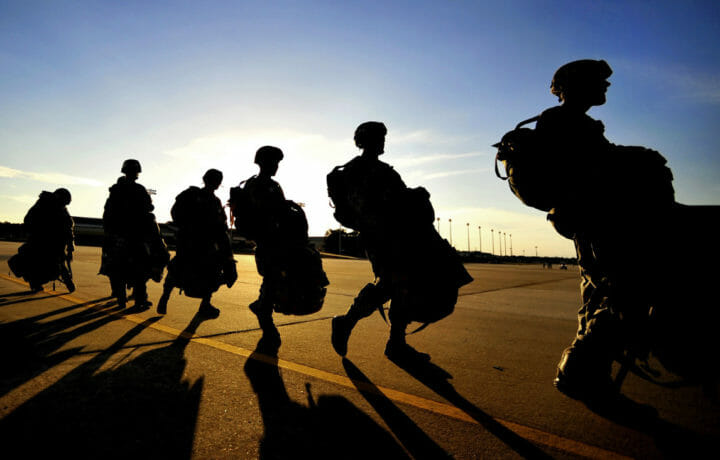Last week, the Department of the Air Force announced that it had met its fiscal year 2025 (FY25) recruiting goals for both the United States Air Force and the United States Space Force. Although FY25 ends on September 30, rather than December 31, it is still impressive that the services have already reached their respective goals.
“I am excited that both the Air Force and the Space Force have met their fiscal year 2025 recruiting goals three months early,” Air Force Secretary Troy Meink said in a news release. “Congratulations to the recruiting service on ensuring we have the best talent ready to join the Department of the Air Force and defend this great nation.”
In total, the DAF collectively recruited nearly 31,000 new service members.
This is a notable turnaround for the U.S. Air Force, which had been in a severe slump that began following the COVID-19 pandemic. It missed its FY23 goal, the first time it had failed to reach its benchmark for new airmen since the 1990s.
The U.S. Space Force, the sixth and newest branch of the U.S. military, has the distinction of being the smallest branch, and as a result, has a goal of recruiting just 700 guardians for FY24 and 800 for FY25. It has consistently met its recruiting goals every year since its establishment in December 2019.
Army and Navy Goals Met Too
The DAF’s announcement follows that of the United States Army, which met its goals four months ahead of schedule for FY25, while the United States Navy reached its benchmark three months ahead of schedule. The United States Marine Corps, a component of the Department of the Navy, has also met its goals for both enlisted personnel and officers for 2025.
The USMC has routinely been the only branch of the military, along with the U.S. Space Force, to meet recruiting goals.
As previously reported, the military services experienced a 12.5% increase in recruitment for fiscal year 2024 (FY24), with the Army surpassing its 55,000 goal and the Navy breaking its 40,600 goal, the highest for the sea service since 2003. However, the Navy will need to maintain a strong FY26 and FY27 to recover from its current gaps at sea. The gaps occur when there are more sailors required for sea duty than there are available billets. The situation has been improving, and the service will continue with its recruiting efforts to ensure a steady flow of new sailors and officers.
A More Lethal Force
Beyond the additional recruits, the Department of Defense has emphasized that it is transitioning towards a more lethal fighting force.
“Our Army can provide combat power anywhere in the world to protect American and allied interests,” U.S. Army Lt. Gen. Brian S. Eifler, deputy chief of staff for personnel, said in April during testimony before the Senate Armed Services Committee’s military personnel subcommittee. “Our Army is lethal, cohesive, and ready. We are proud, but we are not satisfied.”
Eifler emphasized that the Army was refocusing on warfighting, ready combat formations, continuous transformation, and strengthening the Army profession.
“Within these four pillars, our team of professionals will execute all human resource actions that directly support our most important asset: our people,” the general told senators, adding that it is part of the ongoing effort in the overhaul and revamping of the Army’s retention processes.
“This will ensure quality over quantity and provide leaders the right skills for our formations,” Eifler continued.
Recruiting Challenges Remain
Even after two years of meeting recruiting goals, the Pentagon will continue to face competition from the private sector in attracting talent, while it will also continue to face challenges due to declining qualification rates among the youth. The services had to relax some of the regulations on past drug use and the presence of tattoos.
Additionally, the U.S. Army has established its “Future Soldier Prep Course,” which offers lower-performing recruits up to 90 days of academic or fitness instruction. The U.S. Navy has followed suit with its Future Sailor Preparatory Course.
There have been reports that the change at the very top, with a new “Commander-in-Chief” in Washington, D.C., can be credited with the surge this year. However, that fails to explain last year’s recruiting goals being met. Instead, some officials have pointed to increased compensation, expanded delayed entry programs, and even more targeted marketing campaigns, including on social media.
The COVID-19 pandemic also disrupted in-person recruiting efforts and access to high school students. With the pandemic essentially a distant memory, recruiting is finally returning to normal.




